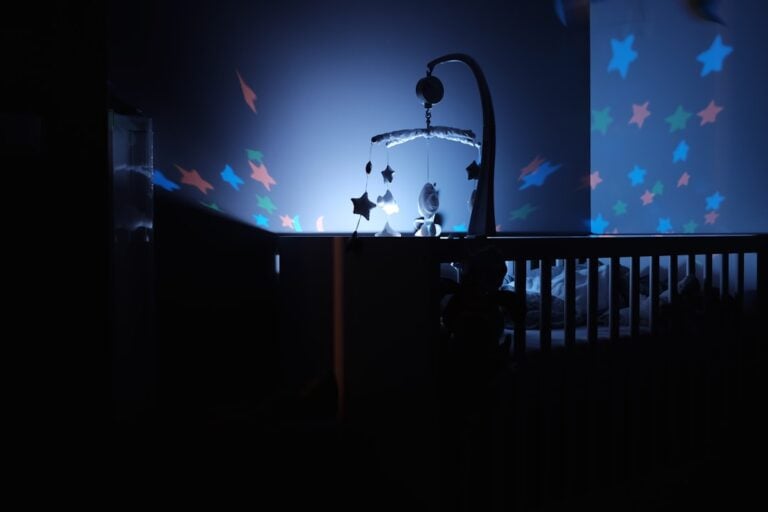A Comprehensive Guide to Understanding Dream Duration
How Long Does It Take to Dream?
Many of us wonder: how long does it take to dream? Most dreams occur during REM sleep, which typically starts 60 to 90 minutes after you drift off. However, the journey into the dream realm can be further nuanced.
To break it down:
– REM sleep: This crucial sleep phase kicks in 60-90 minutes after falling asleep but may vary for each individual.
– NREM sleep: It’s worth noting that dreams can happen across all stages of sleep, not just during REM.
Interestingly, dreams vary significantly depending on the sleep stage. While REM dreams are often vivid and emotional, NREM dreams tend to be simpler and less impactful.
During sleep, we cycle through various stages, including NREM (non-rapid eye movement) and REM (rapid eye movement) sleep. Understanding dream duration and its implications can offer insights into our emotional and psychological well-being.
What Happens During Sleep?
Non-REM Sleep Stages
Non-REM (NREM) sleep consists of three distinct phases, each playing a vital role in rejuvenating your body and brain.
– N1 Stage: This is the lightest sleep stage, lasting about 7 minutes. During this phase, you may experience muscle relaxation and a slowing of bodily functions. Some people notice sudden muscle contractions or the sensation of falling.
– N2 Stage: Lasting approximately 20 minutes, N2 sees your heart rate decrease alongside a drop in body temperature. Brain activity slows, interrupted by bursts of rapid electrical activity known as sleep spindles.
– N3 Stage: In this deep sleep phase, your body focuses on repair and regeneration. Lasting between 20 to 40 minutes, this stage is when your body releases growth hormones, further restoring physical health.
During NREM sleep, crucial healing processes happen, setting the stage for dream activity later on.
The Importance of REM Sleep
Following NREM stages, you enter REM sleep, a phase rich in dreaming and essential for mental health and well-being.
– Brain Activity: Unlike NREM sleep, REM sleep shows heightened brain activity, with wave patterns similar to wakefulness, particularly in regions related to memory and emotion.
– Heart Rate and Body Temperature: These physiological attributes rise, contrasting with the slowing rates seen in NREM sleep.
– Emotional Processing: REM sleep is crucial for emotional regulation, often leading to vivid dreams or even nightmares.
Each REM cycle can span from 10 to 60 minutes and tends to lengthen as the night progresses. This essential sleep phase not only facilitates dreaming but also supports cognitive and emotional health.
How Long Does It Take to Dream?
Factors Affecting Dream Onset
Dreaming doesn’t kick in the moment you close your eyes; it takes time. Typically, you begin dreaming around 70 to 90 minutes after falling asleep. This period is known as sleep latency, during which your body transitions through various stages.
Several factors influence how long it takes to start dreaming:
– Stress Levels: High stress can delay sleep onset, extending the time it takes to start dreaming since an active mind resists relaxation.
– Sleep Disorders: Conditions like insomnia can prolong sleep latency, making it harder to reach the dreaming phase.
– Narcolepsy: Those who suffer from narcolepsy may enter REM sleep almost immediately upon falling asleep, beginning their dream journey much quicker.
– Mindfulness and Meditation: Engaging in these practices can facilitate a quicker descent into restful sleep, potentially reducing the latency period.
– Individual Variations: Everyone’s sleep patterns vary due to factors like age, lifestyle, and even genetics, leading to distinct timelines for when dreaming occurs.
In conclusion, while the general range for the onset of dreaming is 70 to 90 minutes, individual circumstances can significantly alter this timeline.
Dreaming in Different Sleep Stages
REM vs. Non-REM Dreams
Dreams can manifest in both REM and non-REM (NREM) sleep phases, yet they differ notably in terms of complexity:
– REM Dreams: These dreams are often elaborate, filled with emotion and vivid detail. The brain’s memory centers are particularly active during this phase, making REM dreams feel strikingly real.
– Non-REM Dreams: Dreams occurring during NREM sleep tend to be simpler and less memorable. They don’t usually have the same level of emotional depth and can often appear as fragmented thoughts.
– Nightmares and Night Terrors: Nightmares occur primarily during REM sleep, while night terrors happen in NREM sleep and are more common in children.
Overall, recognizing these differences enhances our understanding of the complexities of dreams in relation to sleep stages.
How Long Do Dreams Last?
Understanding Dream Duration
Dream durations vary significantly between REM and NREM sleep:
– Dream Duration in REM Sleep: Dreams during REM can last anywhere from 10 to 60 minutes. Initial REM periods are typically shorter, around 10 minutes, but as sleep cycles repeat throughout the night, the duration increases, peaking during the last REM phase.
– Dream Duration in NREM Sleep: While dreams in NREM are generally shorter and less complex, they still contribute to the brain’s nightly processing without the emotional intensity of REM dreams.
The Benefits of Dreaming
Dreaming plays an essential role in various aspects of mental function:
– Memory Consolidation: Dreams aid in memory retention, allowing the brain to process and store information effectively.
– Stress Management: They assist in emotional processing, helping to reduce stress by allowing reflection on daily experiences.
– Emotional Regulation: Dreaming can offer a healthy outlet for emotions, vital for mental health.
– Creativity: Many people find that their most creative ideas come during dreaming, showcasing the connection between dreaming and enhanced problem-solving abilities.
– Cognitive Function: Dreaming plays a role in improving skills like problem-solving and can contribute to better decision-making in various life areas.
Frequently Asked Questions about Dream Duration
How soon can you start dreaming?
Most individuals begin dreaming about 70 to 90 minutes after falling asleep, coinciding with the onset of REM sleep.
Can you have a dream in 10 minutes?
While formal dreaming occurs during REM sleep, brief experiences resembling dreams can arise shortly after falling asleep as hypnagogic hallucinations.
How long does it take for a dream to form?
Once in REM sleep, dreams can form rapidly, initially lasting about 10 minutes and extending in duration with each subsequent REM cycle.
Conclusion
Understanding how long it takes to dream and the various factors influencing dream duration can significantly enhance sleep quality and mental well-being. At Yawnder, we advocate for the importance of quality sleep as a pathway to a healthier, more productive life.
To foster better sleep, consider creating a relaxing environment, maintaining a consistent bedtime routine, minimizing screen time before bed, and practicing mindfulness and meditation. With dedication to improving sleep quality, you can unlock the benefits of restful, restorative sleep.
For more information and to explore our range of sleep-friendly products, including high-quality mattresses designed for optimal comfort, visit our website. Sleep well and dream big!


















